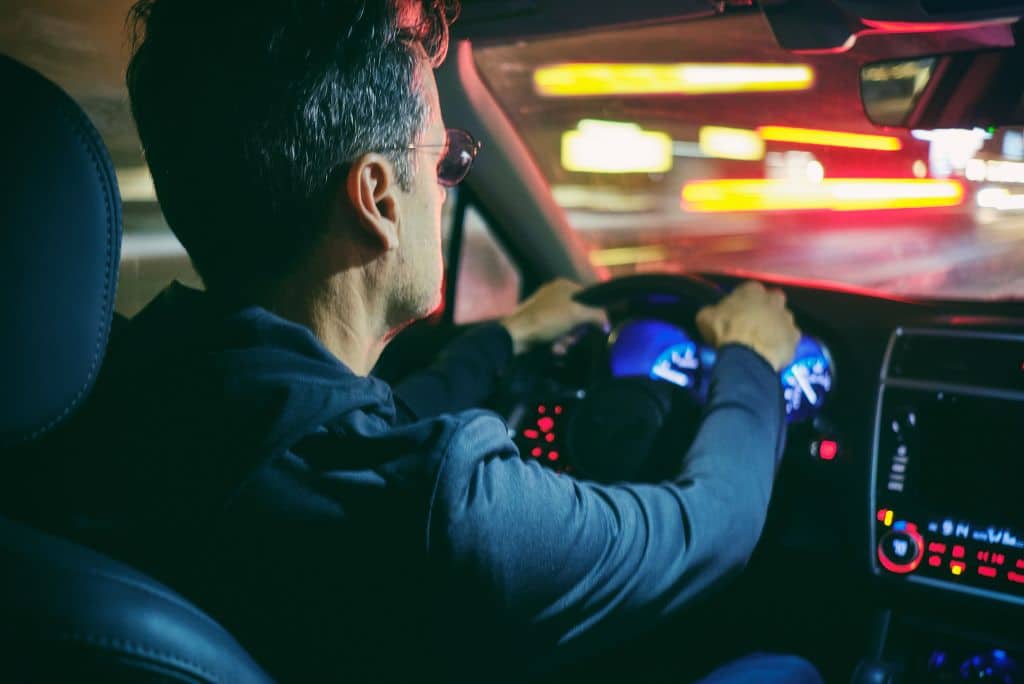Tips for Driving at Night: Staying Safe and Alert on the Road

New drivers may find night driving difficult!
After nightfall, roadways are more risky due to limited vision, headlight glare, and intoxicated driving. This article offers night-going advice by a defensive driving school to keep you safe and aware.
Safe driving is always important but especially crucial when driving at night. This article will cover the dangers of driving at night and provide tips to help you stay safe and alert while driving after dark.
Driving at Night
Driving at night is different from driving during the day in many ways. The lack of sunlight can make it difficult to see, and the glare from oncoming headlights can be blinding. Additionally, the number of impaired drivers on the road tends to be higher at night, increasing the risk of accidents.
What are the Risks of Nighttime Driving?
Driving at night comes with unique challenges and hazards that aren’t present during daylight hours. Awareness of these dangers can help you take the necessary precautions to avoid accidents and stay safe on the road.
- Reduced visibility
The most obvious danger of driving at night is reduced visibility. Our eyes aren’t as sensitive to light in the dark, making it harder to see pedestrians, other vehicles, and obstacles on the road. Additionally, glare from oncoming headlights can further reduce visibility.
- Glare from oncoming headlights.
The bright headlights of oncoming traffic can cause temporary blindness, which can be extremely dangerous when driving at high speeds. It is especially true if the other driver has their high beams on, as the intense light can make it nearly impossible to see the road ahead.
- Fatigue and drowsiness
Driving at night can also be tiring and exhausting, leading to fatigue and drowsiness. It can cause slower reaction times, impaired judgment, and a higher risk of accidents.
- Increase in impaired driving incidents
Driving at night also increases the risk of encountering impaired drivers, such as those who have been drinking or using drugs. These drivers may be more challenging to spot due to reduced visibility, and their poor judgment can make them more likely to cause accidents.
- Higher risk of wildlife encounters
Finally, driving at night increases the risk of encountering wildlife on the road, such as deer or raccoons. These animals are more active at night and can be challenging to see, leading to potentially dangerous collisions.
Tips for Driving at Night
Driving at night is more complex, but ways to keep safe and aware exist.
- Get enough rest
Resting before driving at night is crucial to safety. Getting enough sleep before driving is crucial since weariness is as harmful as drunk driving. Yawing, heavy eyelids, and trouble focusing are indicators of weariness. If you get fatigued, stop and snooze or exchange drivers.
- Check and adjust your headlights
To drive safely at night, check your headlights. Replace burned-out bulbs and test all lights. Adjusting your headlights prevents blinding other drivers. It implies utilizing high lights only when no other cars and low beams when following them.
- Use a mirror dimmer
Glare from oncoming headlights can be a significant problem when driving at night. To reduce this glare, try using a mirror dimmer. This simple device attaches to your rearview mirror and allows you to adjust the angle of the mirror to reflect light away from your eyes. Not all cars have a mirror dimmer, but you can purchase one at most auto parts stores.
- Minimize light in the cabin
A dark cabin reduces distractions and glares while driving at night. Turn off all interior lights, including dashboard lights and cell phones. If you need to use your phone for GPS or music, consider mounting it on the dashboard rather than holding it in your lap. It will help reduce the light in the cabin and prevent distractions.
- Use your high beams
While it’s essential to be considerate of other drivers, using your high beams can be a lifesaver when driving on dark roads with few streetlights. High beams. Avoid Two-Lane Highways. Driving on a two-lane highway can be pretty challenging at night, as the road can be narrow and winding, making it difficult to see what’s ahead. In addition, oncoming traffic can be blinding, and there is often little or no shoulder to pull over safely. If you must drive on a two-lane highway, stick to the right lane and be extra cautious, as the chances of encountering wildlife on these roads are higher.
- Watch for wildlife
Nighttime driving in rural regions might lead to wildlife encounters. Your car’s headlights may attract nighttime animals. Slow down and halt if you observe wildlife near the road. Be warned that one animal may lead to several.
- Take care of your eyes
Maintaining your eyesight when driving is crucial. If you need glasses or contacts, have frequent eye checkups. Looking straight into approaching headlights while driving at night might temporarily blind you. Keep your windshield and mirrors clean and smudge-free to decrease glare and increase vision.
- Test and use your lights
Before driving at night, testing all your lights, including your headlights, taillights, brake lights, and turn signals, is crucial. Ensure all lights are working correctly and are aimed precisely so they don’t blind other drivers. Also, use your lights appropriately; high beams should be used only in rural areas with little or no traffic, and low beams should be used in all other situations.
How to Survive a Long Commute
Driving at night can be particularly challenging if you have a long commute. Plan ahead and prepare for the trip to make the drive more comfortable. Ensure your car is in good condition and you have enough fuel for the journey. Also, pack snacks and drinks to keep yourself alert, and consider listening to music or audiobooks to keep yourself engaged.
3 Things to Look for When Test Driving a Car
If buying a new automobile, test drive it at night because driving conditions might vary considerably. Find a car with bright, adjustable headlights to see ahead without dazzling other drivers. Ensure the automobile has a good suspension and a dark cabin to avoid distraction.
Does Driving Stress You Out?
Driving at night can be stressful and impair your ability to drive safely. Stay calm and focused and avoid distractions like texting or phone use to reduce stress while driving. Also, practice deep breathing and relaxation techniques, and get plenty of rest before moving.
Why Your Driving Posture Matters
Driving posture affects comfort and safety. Sit upright with your back against the seat and your hands on the steering wheel at 9 and 3 o’clock. Adjust your seat and steering wheel to reach the pedals and view the road comfortably.
People Also Asked Questions
The following are some questions that are posed rather frequently about nighttime driving:
Q. Is it dangerous to drive at night?
A. Yes, driving at night is more dangerous than driving during the day due to reduced visibility, headlight glare, and increased impaired driving incidents.
Q. How can I stay alert while driving at night?
A. Stay alert while driving at night, get enough rest before driving, avoid alcohol and drugs, keep the cabin dark, use your high beams when appropriate, and take regular breaks to combat fatigue.
Q. How can I reduce glare from headlights?
A. To reduce glare from oncoming headlights, use a mirror dimmer and adjust your headlights properly.
Q. How can I avoid hitting animals on the road at night?
A. To avoid hitting animals on the road at night, drive slower,

